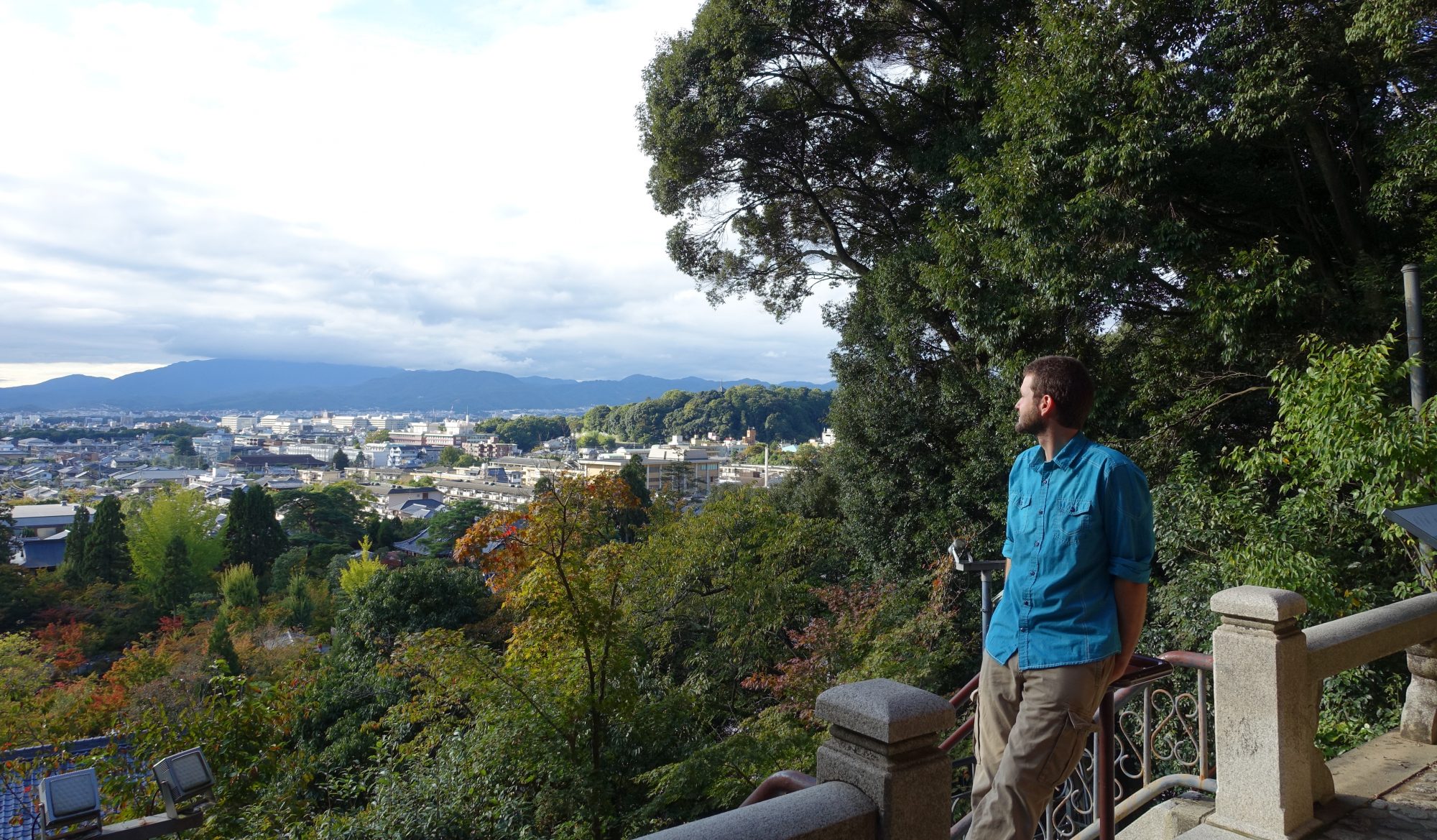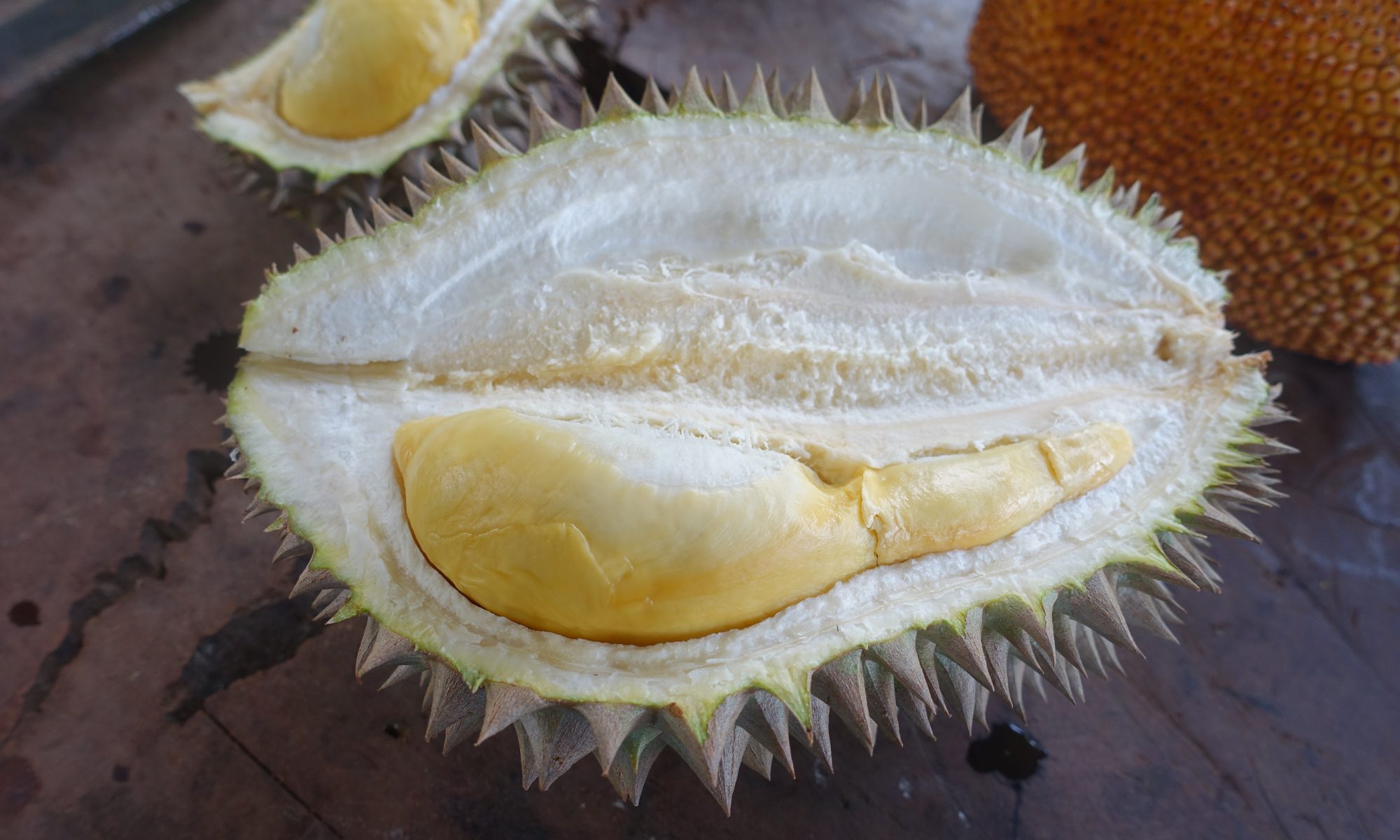At the time of writing this, Elani and I are one week into our five week stay in Penang, Malaysia. It’s a wonderful mashup of cultures and history, and I’m sure I’ll have a lot more to write about it, but for now I want to talk about durian. The “king of fruit,” as it’s often called, has to be one of the most famous and controversial in South East Asia, if not the whole world. Some value it as a delicacy and discuss the flavor and varieties with the same mystique as those who enjoy top self wines and whiskies. Others find the taste, texture, and particularly smell an affront to the senses – so much so that it is specifically banned from some hotels in the this part of the world. Malaysia is a particular hotspot for this contentious fruit: not only the fresh fruit, but also durian candy and ice cream are commonly available in shops and stalls around Penang. So with all the hype, we had to give it a try – I mean, how could we not. But how to even begin to figure out how to tell the “good” durian from the “bad”, not to mention all the stories of the overwhelming smell? If we brought one home and opened it up, would our apartment irrevocably smell of durian for weeks to come?
Looking over various tours in the Penang area on AirBnB, we found a tour to a local durian farm, including all you can eat durian. Well, if we’re going to do this, we figured we might as well do it right, so we booked the tour and paid a few extra bucks to get the “fancy” grade durian. Our hosts picked us up in Georgetown and drove us to their farm in the hills about 30 minutes drive outside of town. Once there, we met the other folks doing the tasting, a Chinese couple and their adult son, who seemed to be much more seasoned connoisseurs than us. The farm was a beautiful patch of jungle set high among the foot hills with a great view of the surrounding countryside and Indian Ocean beyond. Our host, Peh, and her parents and uncle showed us around their farm where they grew not only durian, but also banana, papaya, mangosteen, rambutan, and nutmeg, along with a variety of veggies for their own use. They showed off – with obvious pride – their durian trees, which included some large trees that were over a hundred years old and evidently produce the best fruits.
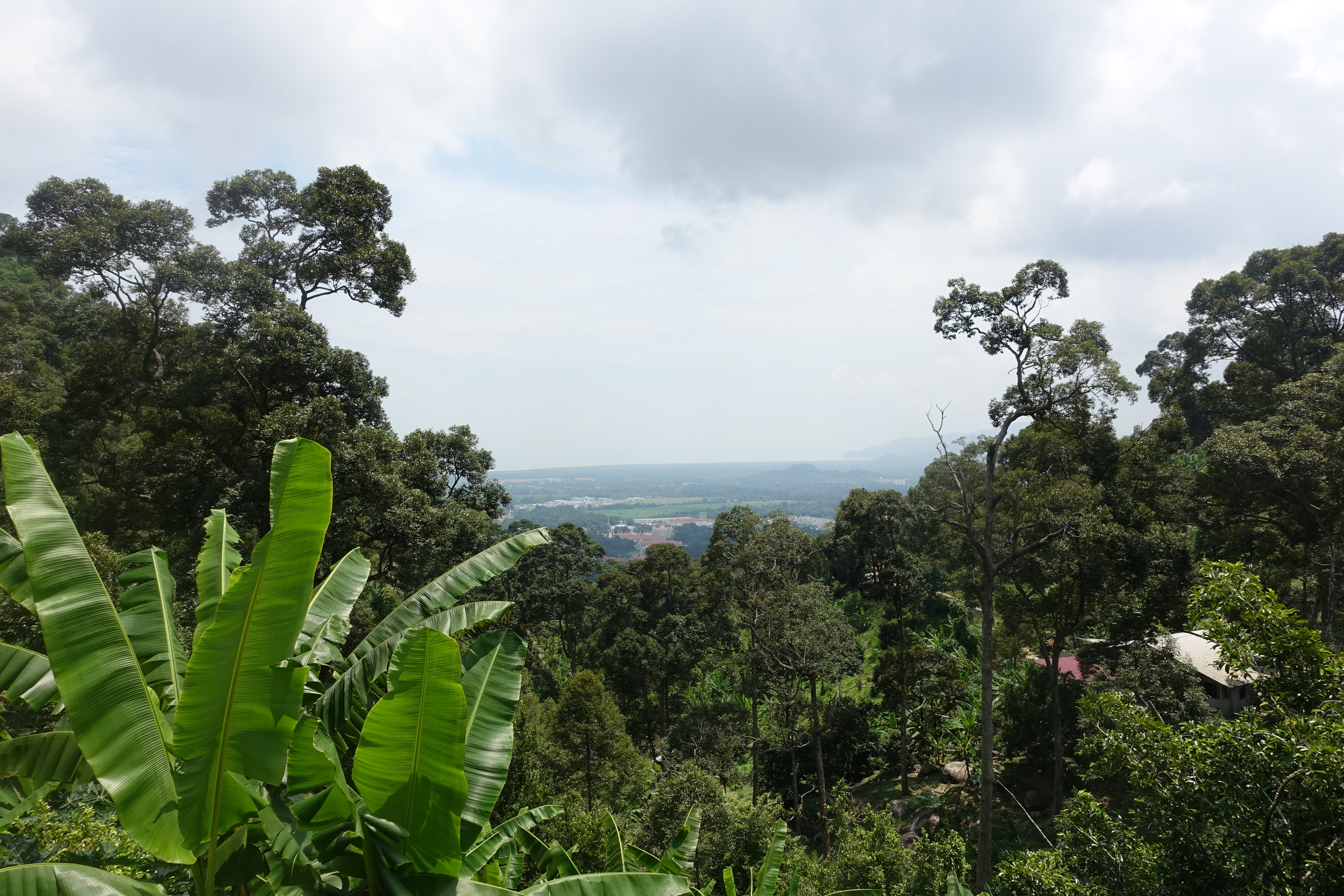
Taken by Elani
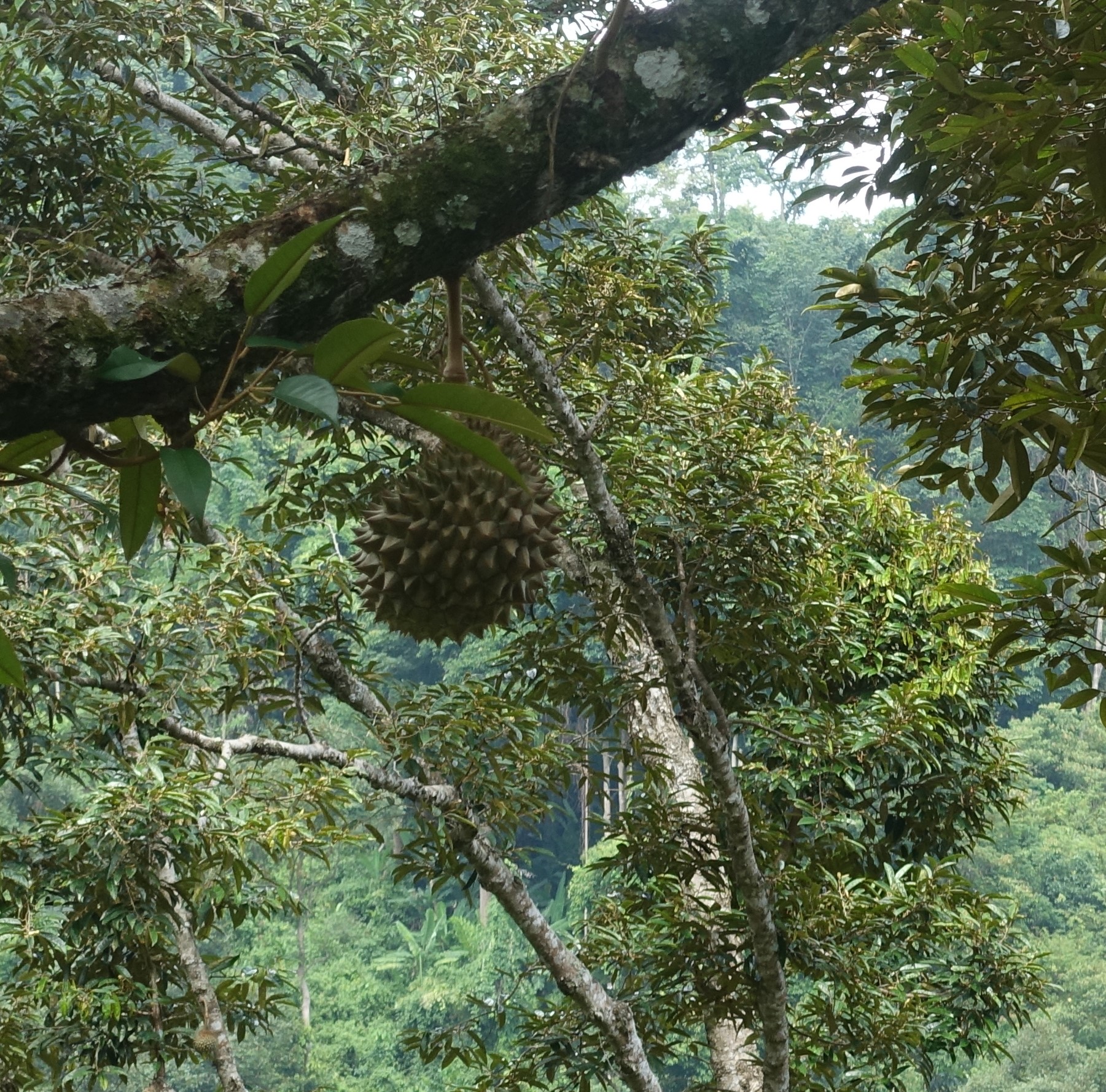
Taken by Elani
We started the tasting by sampling the rambutan and mangosteen, both of which were great, though I’d say the mangosteen were particularly tasty. This wasn’t Elani or my first time trying either of these, both of which are common not only here in Malaysia but also in Bali (where we were prior to flying here). Both are fairly uncommon in the states, and if you get the chance, I recommend them. Rambutans are quite similar to lychee, but with a slightly earthier taste. Before peeling off the skin, they look about as much like a tropical sea slug as a fruit. When ripe, mangosteens are round, about 2 inches in diameter, and glossy black. You have to break off the pithy outer shell to get at the multi-lobed, translucent white fruit inside. They are quite different from anything else I’ve had, quite sweet and tart, with very soft flesh and a floral, almost perfume-like smell. They’re very tasty, and as it turns out, a common pairing with durian. Then it was time to get down to business.
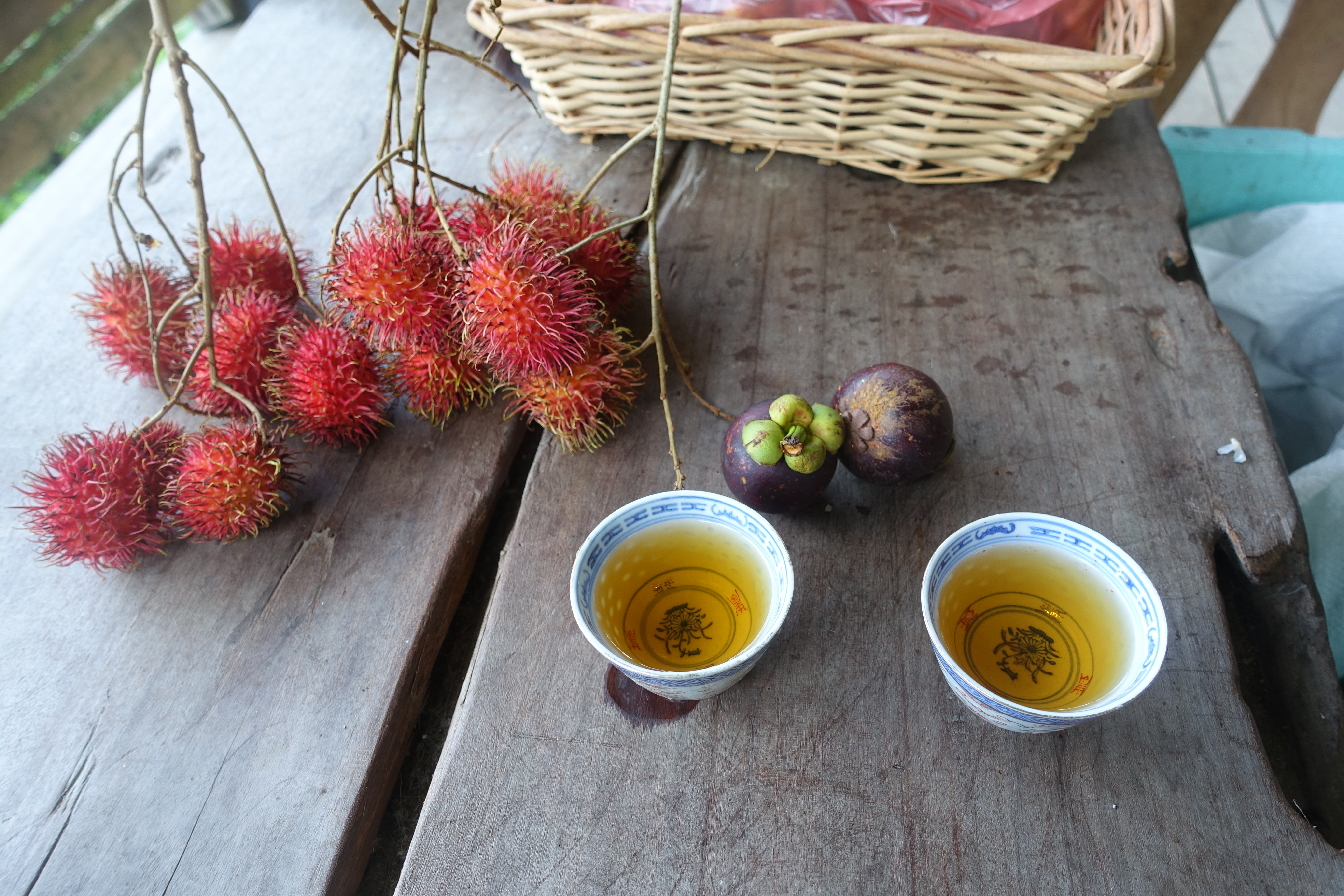
Taken by Elani
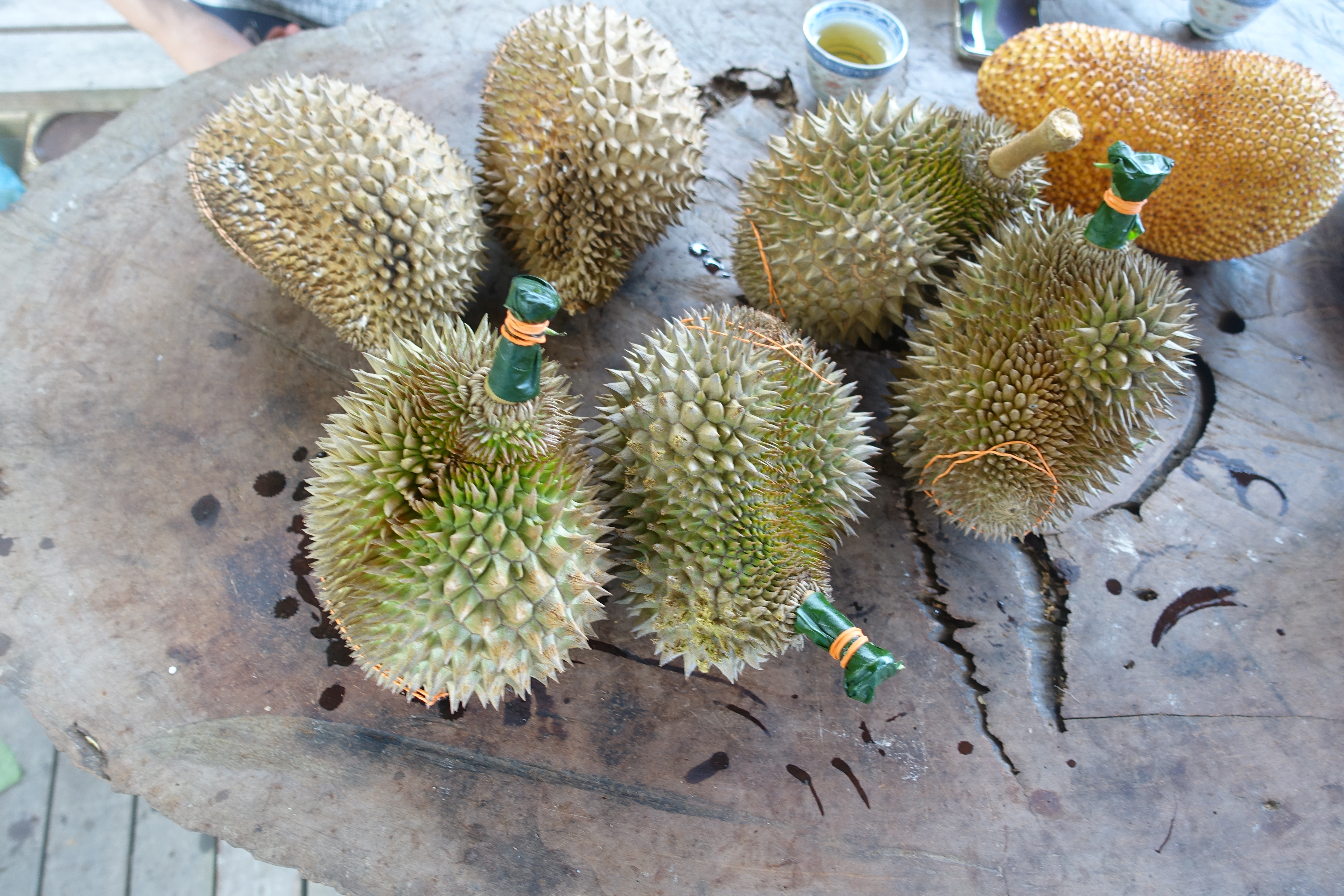
Taken by Elani
There are very few things in life that I’ve found really live up to their hype, and durian didn’t buck the trend on that count. I found the smell to be in no way overwhelming. A little stronger than most fruits, to be sure, and complex – an odd mix of floral sweetness, with funky notes similar to, but not quite like a combination of aged cheese and fresh garlic. So, a bit odd, but considering the rather florid comparisons to opens sewers or worse I’ve heard, really nothing to get all worked up about. And the taste? Again, complex. Trying to describe it really points out the insufficiency of the English language regarding taste. All I can really do is write down a list of things that you’ve probably tasted before and ask you to imagine eating them together, but I’m sure that that would taste nothing like durian in all reality. So maybe like a good strong brie, with jackfruit and a little garlic. No, that’s not quite it. How about a pear cheesecake with blue cheese, bourbon, and truffles? Yeah, that’s not it either really. Alright, this isn’t working, so suffice to say they are sweet, there are fruity notes, almost perfume-like notes, but also some really earthy funky notes like aged cheese, and a little something almost tingly and fermented tasting. Oh, and each one’s different. We got to try several varieties (they grow 10 on this farm alone) from younger and older trees, and all were different, with different notes coming through more or less. Then there’s the texture. The flesh is soft, sort of like a custard or soft cheese, but again there’s a lot of variety. Some patches were a bit firmer, more like lychee. Also, there’s a bit of a membrane around the outside of each section and again around the seeds at the center of each section, not tough, but firmer that the rest of it, and providing an interesting contrast.
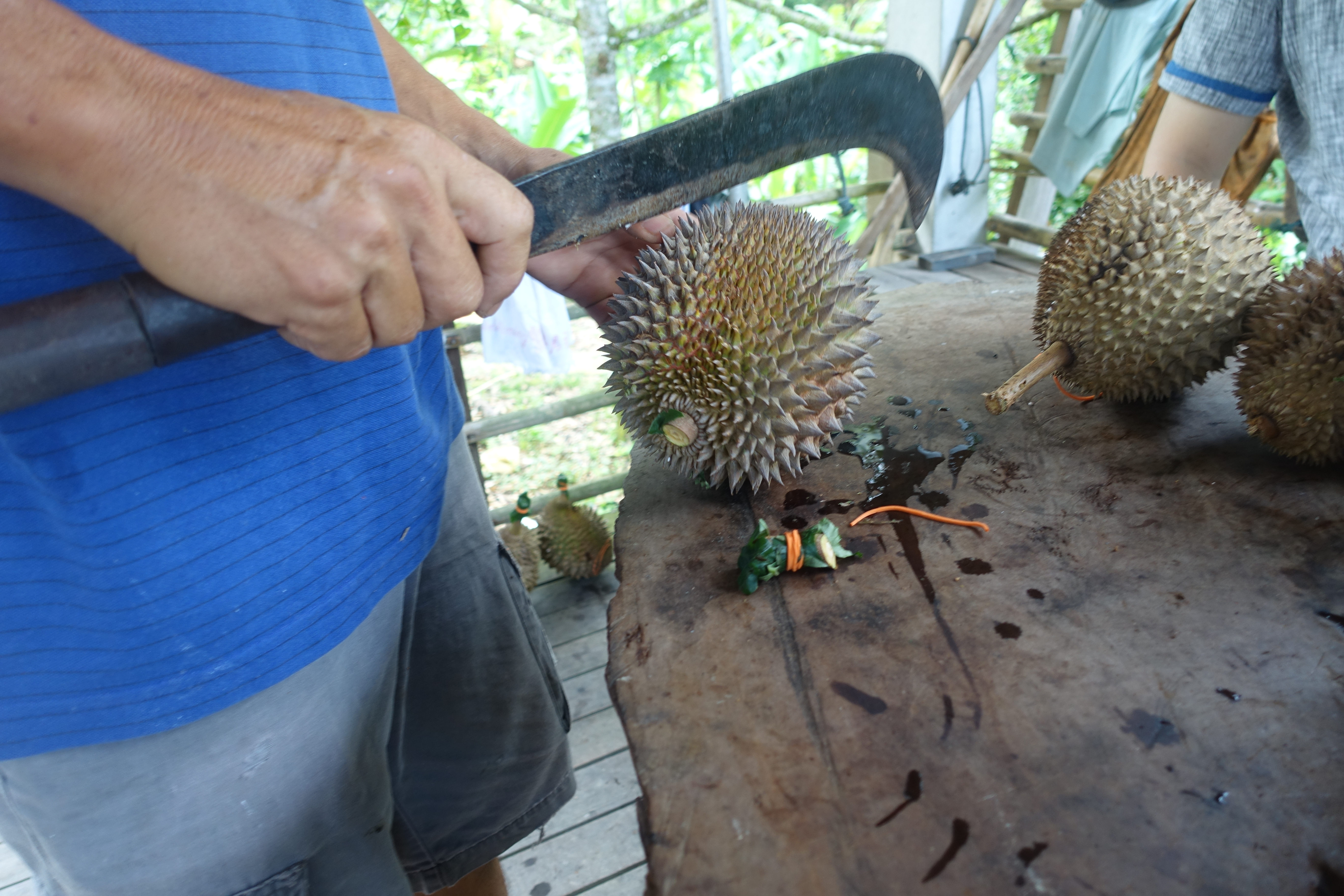
Taken by Elani
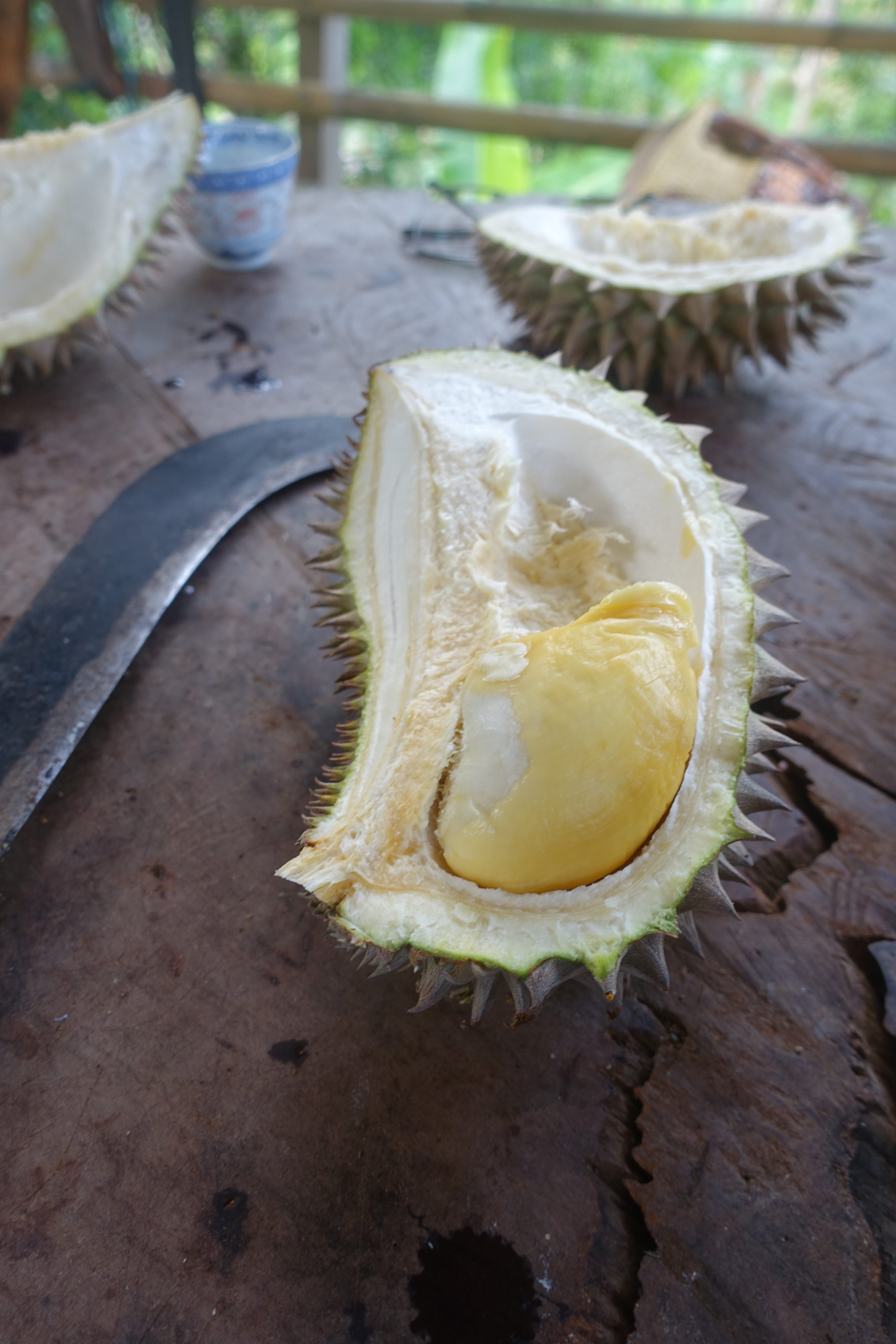
Taken by Elani
All in all, I think complexity is really the defining element in durian. The only thing that durian really tastes like is durian, and every durian tastes different. Like everything that’s an acquired taste (wine, beer, whisky, aged cheese, coffee), and durian is definitely an acquired taste, it’s complex and varied with a lot of pleasant tastes and just enough unpleasantness to keep it interesting. So if you focus on the unpleasant flavors, you’re not going to enjoy it. But if you’re willing to take it all in and appreciate the good and the bad, you’ll find a lot more of the former than the latter and at worst, it’s at least interesting. In a lot of ways, enjoying durian is traveling to a new city. You have to take it all in and enjoy everything. If I focused on the dreary high rise condos all over the suburbs, the painfully mediocre beer, or that time when I watched a rat screech and go tumbling off the eves of the building just in front of me into one of the open drainage ditches (that often have a slight raw sewage smell) next to the side walk, only to shake itself off and run under the door into the building it just came out of, I don’t know that I’d really have a very high opinion of Penang. But if I take that along with the amazing and inexpensive food, varied and rich culture, and depth of history that define Penang, it is a pretty great place to be – even if now I have to look both up AND down to avoid rats.
